Giza, Pyramids
The pyramids of Giza: the tombs of three Egyptian kings of the Fourth Dynasty, Khufu (Cheops), Khafra (Chephren), and Menkaura (Mycerinus). They were regarded as one of the Seven Wonders of the Ancient World.
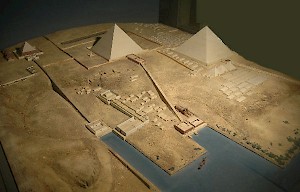
Between c.2630 and c.1640, the Egyptian kings erected tombs for themselves that were shaped like artificial mountains. The oldest pyramids were built by the rulers of the Third Dynasty; king Djoser was the first to pile several square tombs (mastabas) of decreasing size on top of each other, and created the first step pyramid. The true pyramid, which is a real triangle, was developed during the reign of Snofru, a king of the Fourth Dynasty.
The famous pyramids of Khufu (Cheops), Khafra (Chephren), and Menkaura (Mycerinus) at Gizeh were erected by Snofru's successors. Later generations built smaller monuments, but the large monuments of the Fourth Dynasty continued to impress the people. The pyramids are the only one of the Seven Wonders of the Ancient World that survives more or less intact.
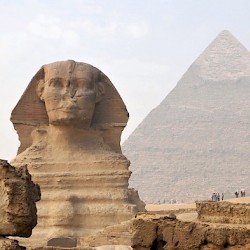 Giza's famous sphinx and the pyramid of Khafra |
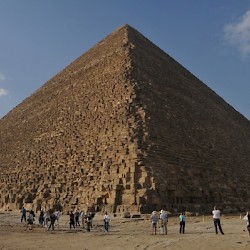 Giza, Pyramid of Khufu (the "great pyramid") |
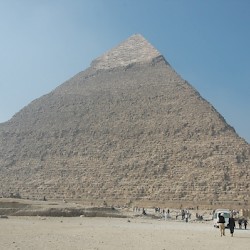 Giza, Pyramid of Khafra |
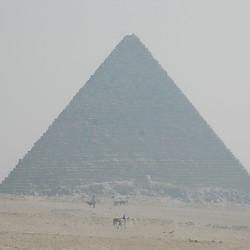 Giza, Pyramid of Menkaura |